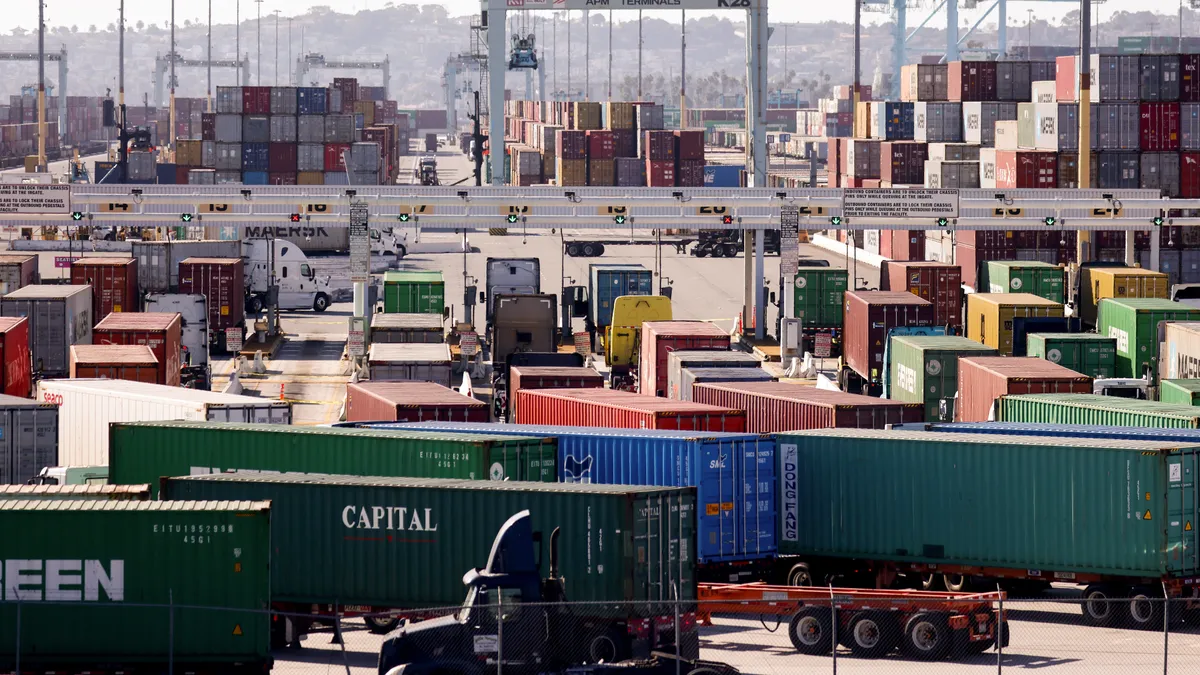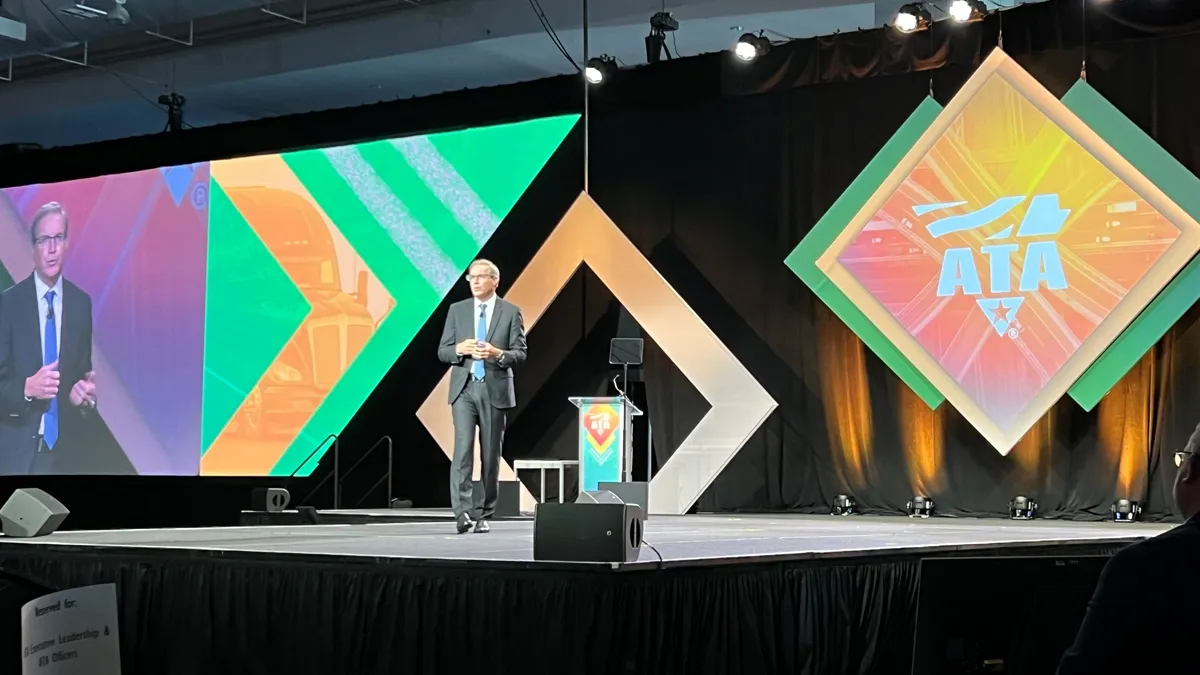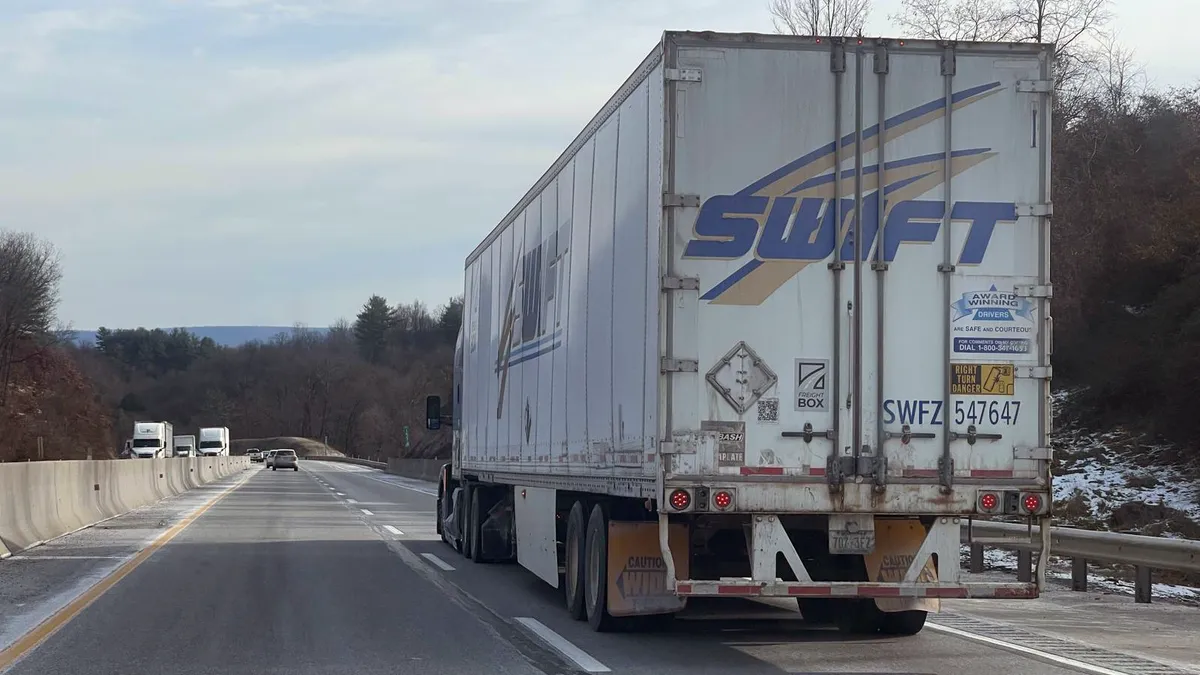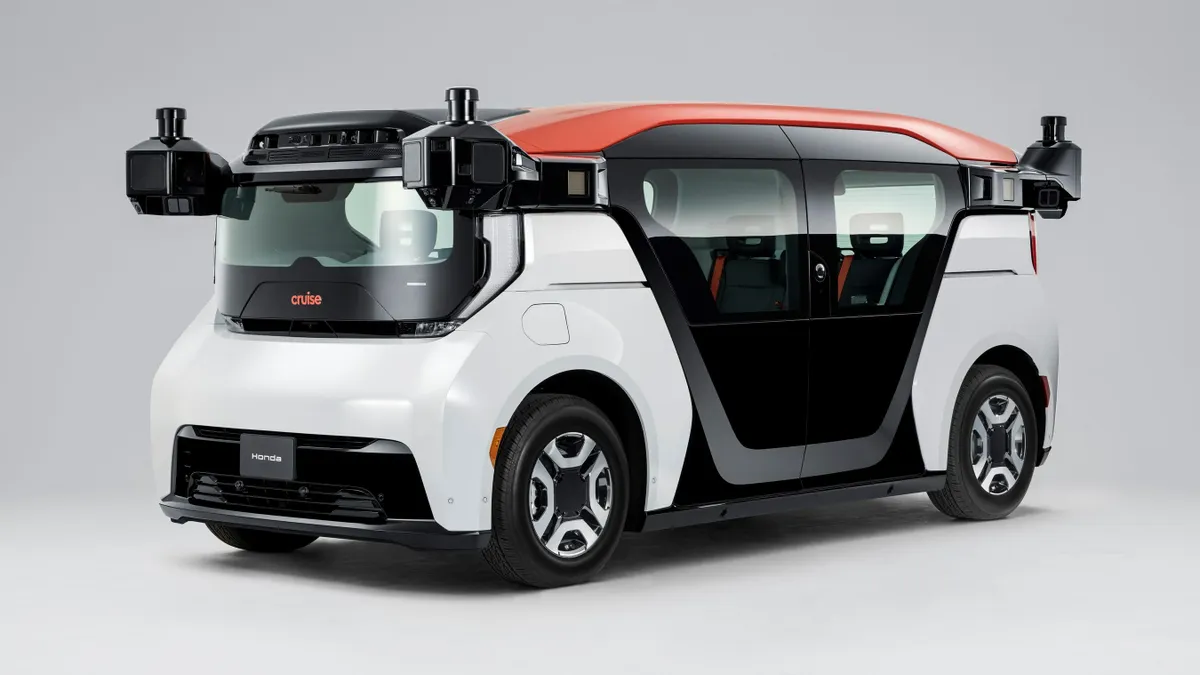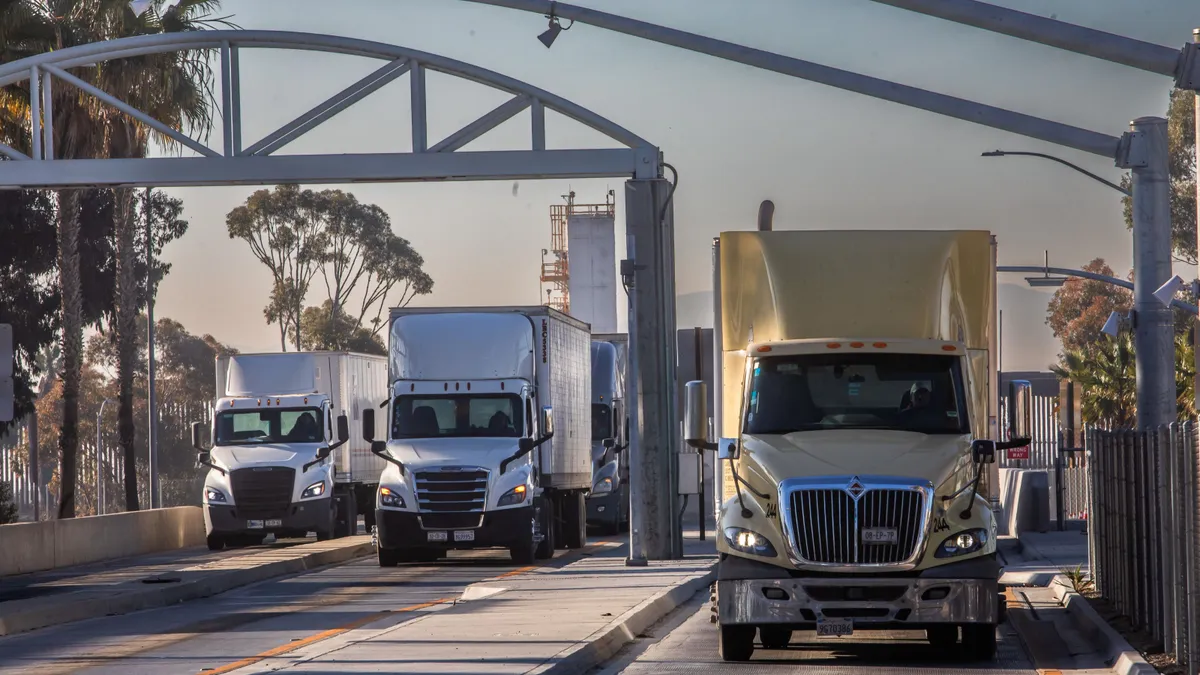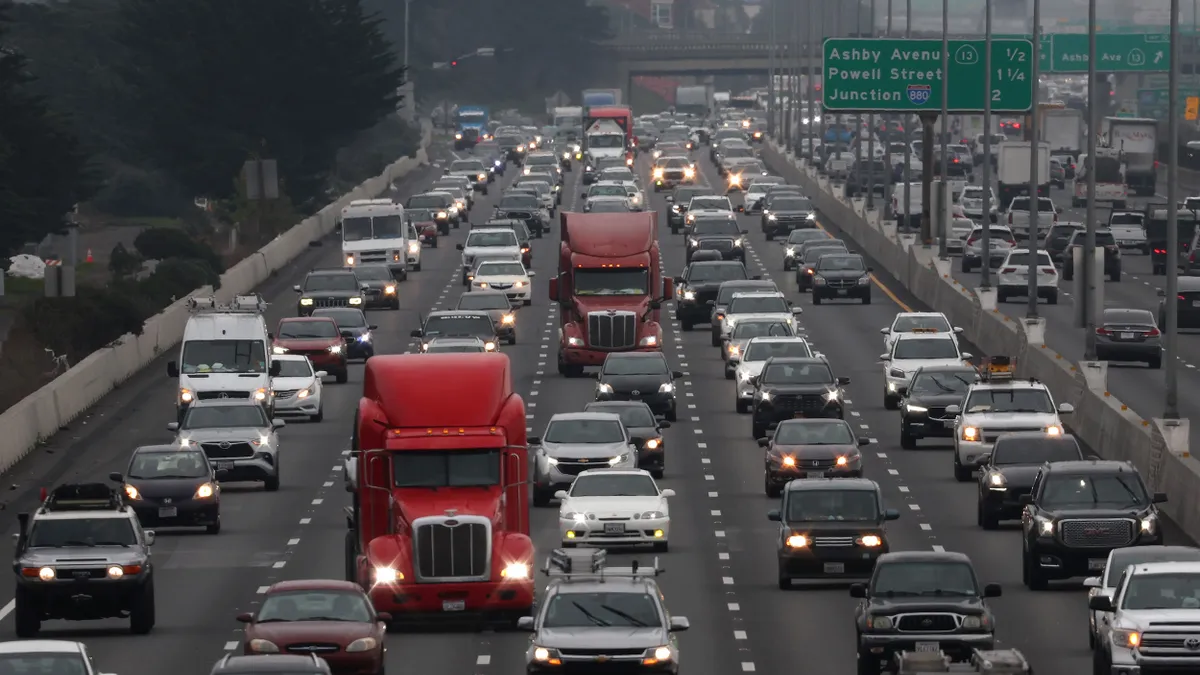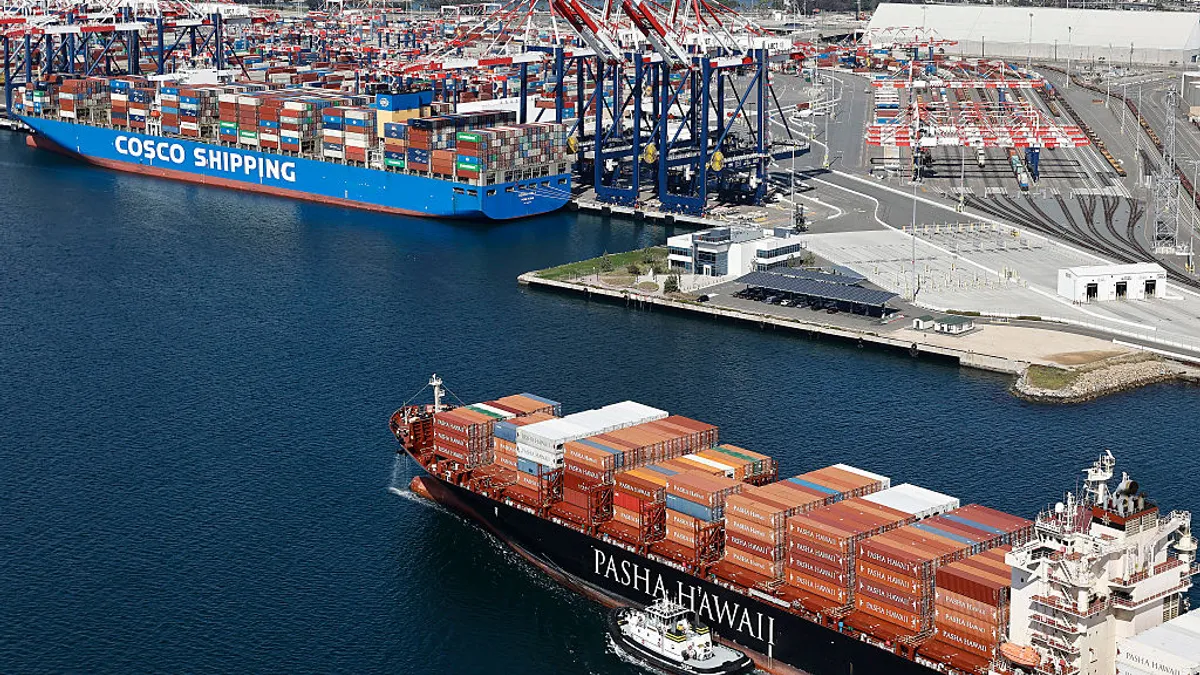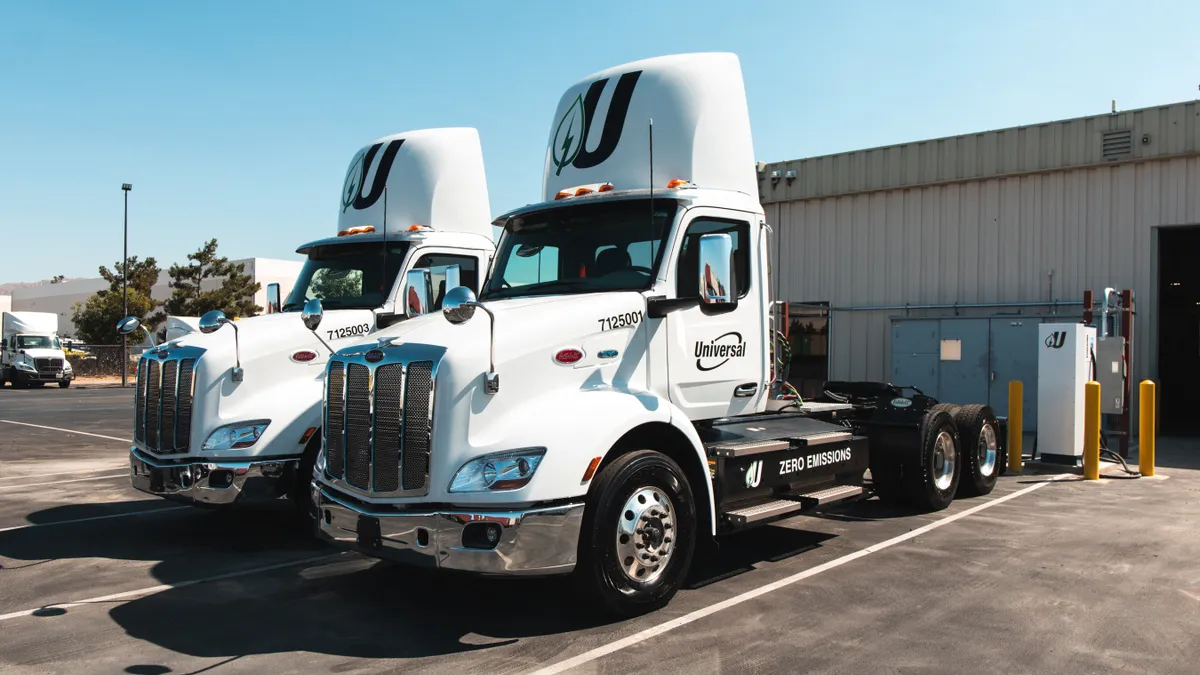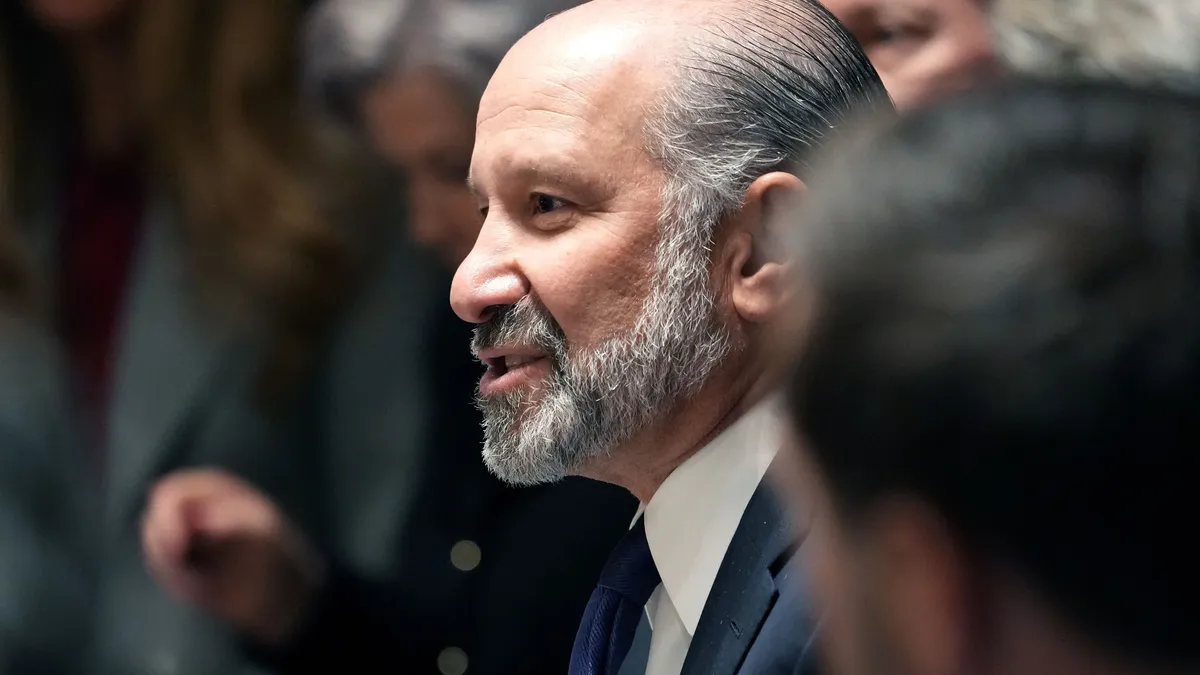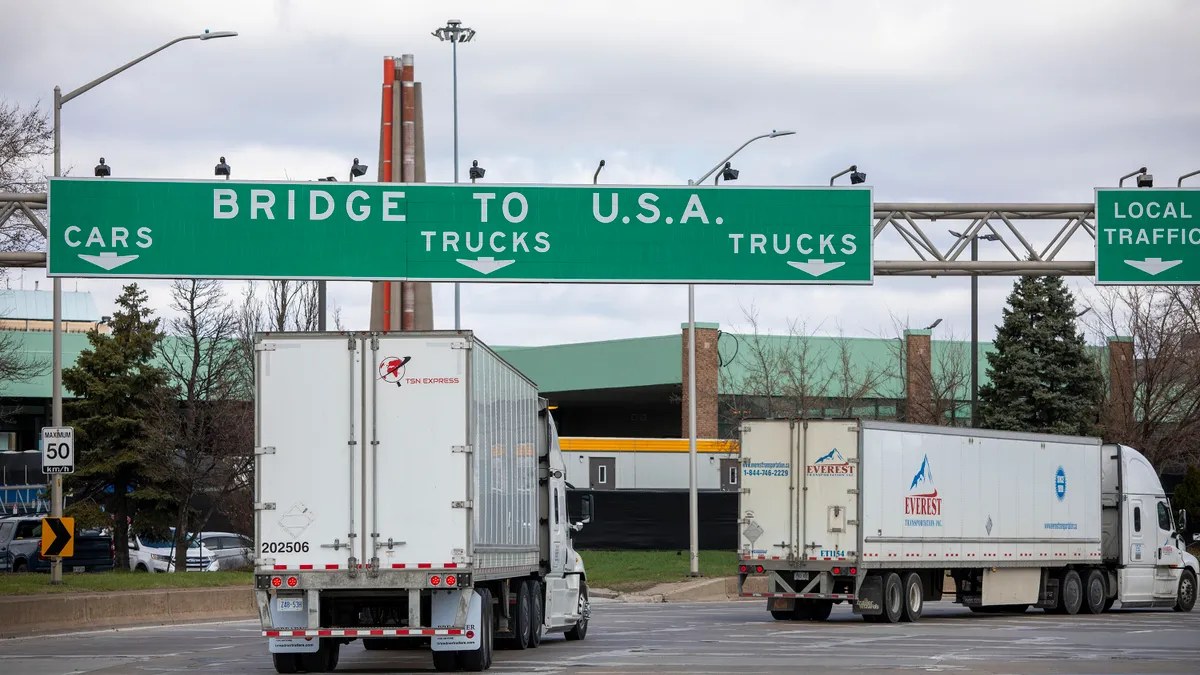The looming enforcement of California’s AB5 labor law has left many drayage carriers in the state scrambling to ensure their operations are compliant, Harbor Trucking Association CEO Matt Schrap told Port of Los Angeles Executive Director Gene Seroka during the port’s August briefing.
But AB5 isn’t the only state policy creating angst among the association’s more than 400 member motor carriers. State and port regulators are set to require drayage carriers to upgrade fleets as part of a push to curb emissions, a move the industry worries will ultimately worsen congestion and reduce the number of trucks on the road.
Schrap appeared via video call during Seroka’s briefing, providing updates on his members’ most pressing regulatory concerns. Here’s what he had to say about the effects of California’s trucking regulations on drayage operations.

AB5 injunction lifted, but no ‘clear enforcement pathway’
The gig economy law is poised for enforcement across the state after the U.S. Supreme Court declined to hear a challenge to the law from the California Trucking Association. A lower court judge this week lifted the injunction that prevented enforcement of the law in the trucking industry, according to a release from the Scopelitis, Garvin, Light, Hanson & Feary law firm.
While some carriers have begun to prepare for the upcoming changes, the law has created an uncertain future for the state’s estimated 70,000 owner-operators, many of whom haul cargo at ports. AB5 would require fleets to directly employ drivers instead of hiring independent contractors, creating major upheaval in the industry and the way it classifies workers.
Schrap said in his remarks that members are “still waiting for a clear enforcement pathway from the state of California.”
“You still have a lot of concern out there [about] exactly how this bill is going to be enforced, not only [for] in-state, California-based motor carriers, but even for those motor carriers who are coming from out of state, doing business here,” Schrap said. “So, a lot of head-scratching, unfortunately.”
CARB rule will ax pre-2010 model engines
The California Air Resources Board rule requiring trucks have a 2010 engine model year or newer to enter ports or rail yards goes into effect on Jan. 1, 2023.
The rule will require the removal and eventual replacement of trucks with 2007-2009 model engines, which handle about 23% of full container moves at the San Pedro Bay Port Complex, Schrap said, citing port statistics.
“It’s just around 5,000 vehicles that are registered to do business here and those active vehicles is right around 3,500, 3,600,” Schrap said.
“Suffice it to say,” he added, “removing a quarter of the capacity from the system could have profound impacts on our ability to get business done and move those boxes off-dock.”
Zero-emission goals remain far-off
The ports of Los Angeles and Long Beach aim to shift to an entirely zero-emissions drayage fleet by 2035, and the ports announced a fund in April to incentivize fleets to make the jump.
But fewer than three dozen of the 21,000 trucks currently registered to haul cargo at the ports are zero-emissions vehicles, leaving a significant challenge ahead, Schrap said.
To get reach that goal, a CARB Clean Fleets rule will require all new drayage trucks to be zero-emission by January 2024. Making the mandated switch to more expensive heavy-duty zero-emissions vehicles remains a challenge, despite government incentives to ease the financial crunch. Further complicating the transition is the lack of robust zero-emission charging infrastructure for drivers to use in the port and surrounding areas, Schrap said.
Drivers are also anxious about the range of electric trucks and that they’ll find themselves “running out of juice prior to getting back to their home base,” Schrap said. Finally, the weight of EV batteries in a truck can remove 10,000 to 11,000 pounds of cargo capacity to make room for the technology.
“We need to be smart about this because the industry is not going to jump into technology that's going to cause them to have to spend more money to do less work,” he said.
Schrap, who formerly served as director of environmental affairs for the California Trucking Association, suggested additional infrastructure investments are needed from the state, local jurisdictions and the ports.
“We need to be a little bit more careful in how we approach the zero-emission mandate starting as early as 2024,” Schrap said. “We do not see a robust infrastructure rollout happening by that date.”



